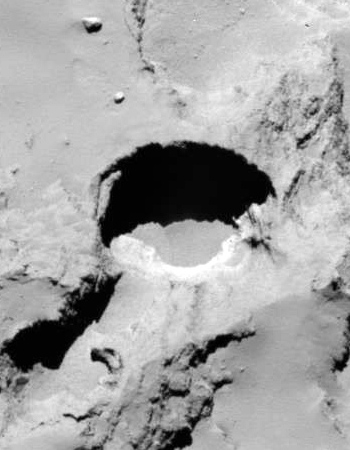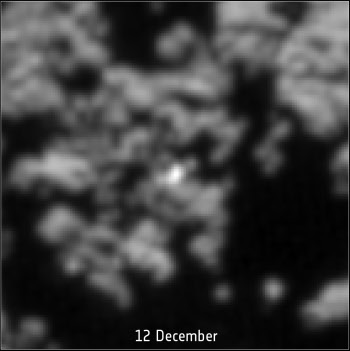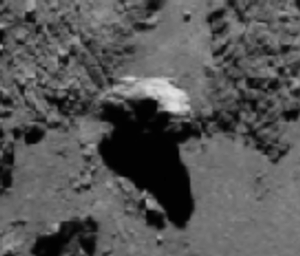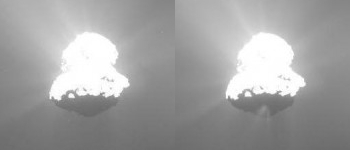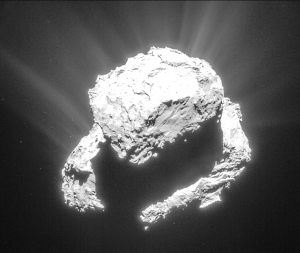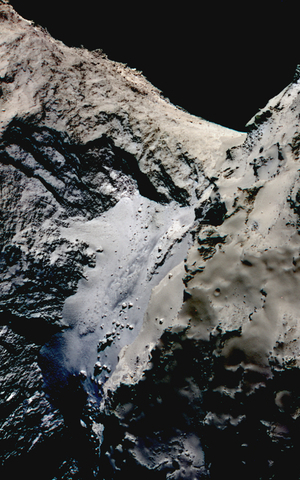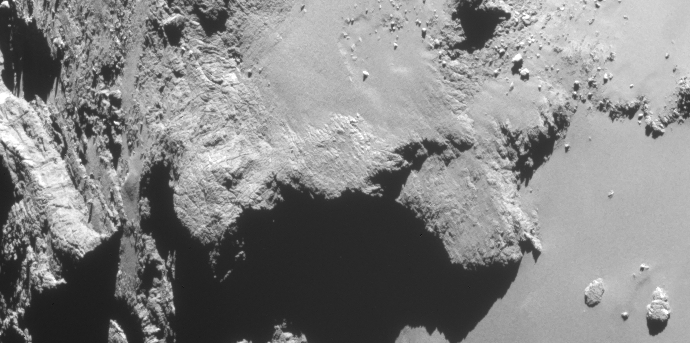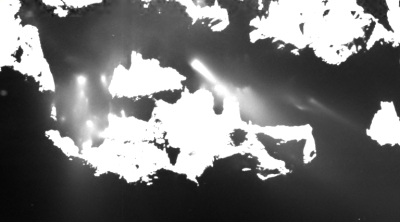
Cool image time! Rosetta’s high resolution camera is now finding that, due to increased activity as Comet 67P/C-G approaches the sun, jets of material now continue to evaporate off the surface even after sunset.
“Only recently have we begun to observe dust jets persisting even after sunset”, says OSIRIS Principal Investigator Holger Sierks from the Max Planck Institute for Solar System Research (MPS) in Germany. In the past months, the comet’s activity originated from illuminated areas on the day side. As soon as the Sun set, these jets subsided and did not re-awake until after the next sunrise. (An exception poses an image from 12 March, 2015 showing the onset of a dust jet on the brink of dawn.)
According to OSIRIS scientists, the jets now occurring even after sunset are another sign of the comet’s increasing activity. “Currently, 67P is rapidly approaching perihelion in mid-August”, says Sierks. At the time the image was taken, comet and Sun were only 270 million kilometers apart. “The solar irradiation is getting more and more intense, the illuminated surface warmer and warmer”, Sierks adds.
Because the jets are now remaining active into the night, it is allowing us to see more precisely their points of origin on the surface, which can then be studied more closely in daylight. Previously it was difficult in daylight to pinpoint the exact spot where the jets began.

